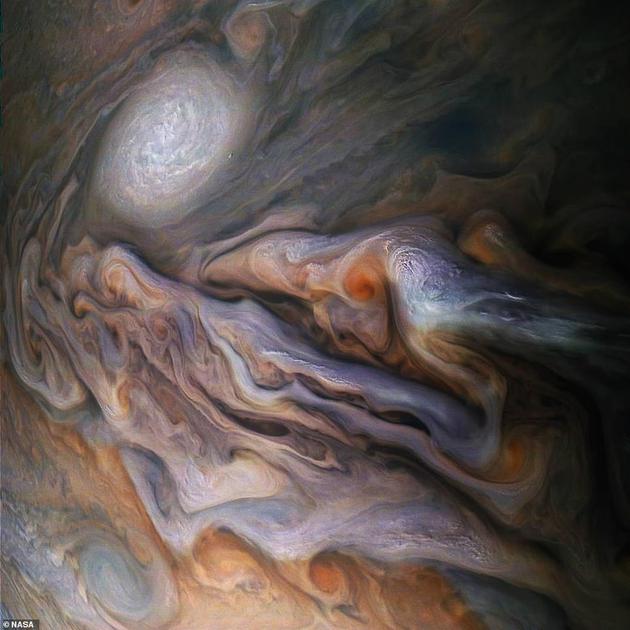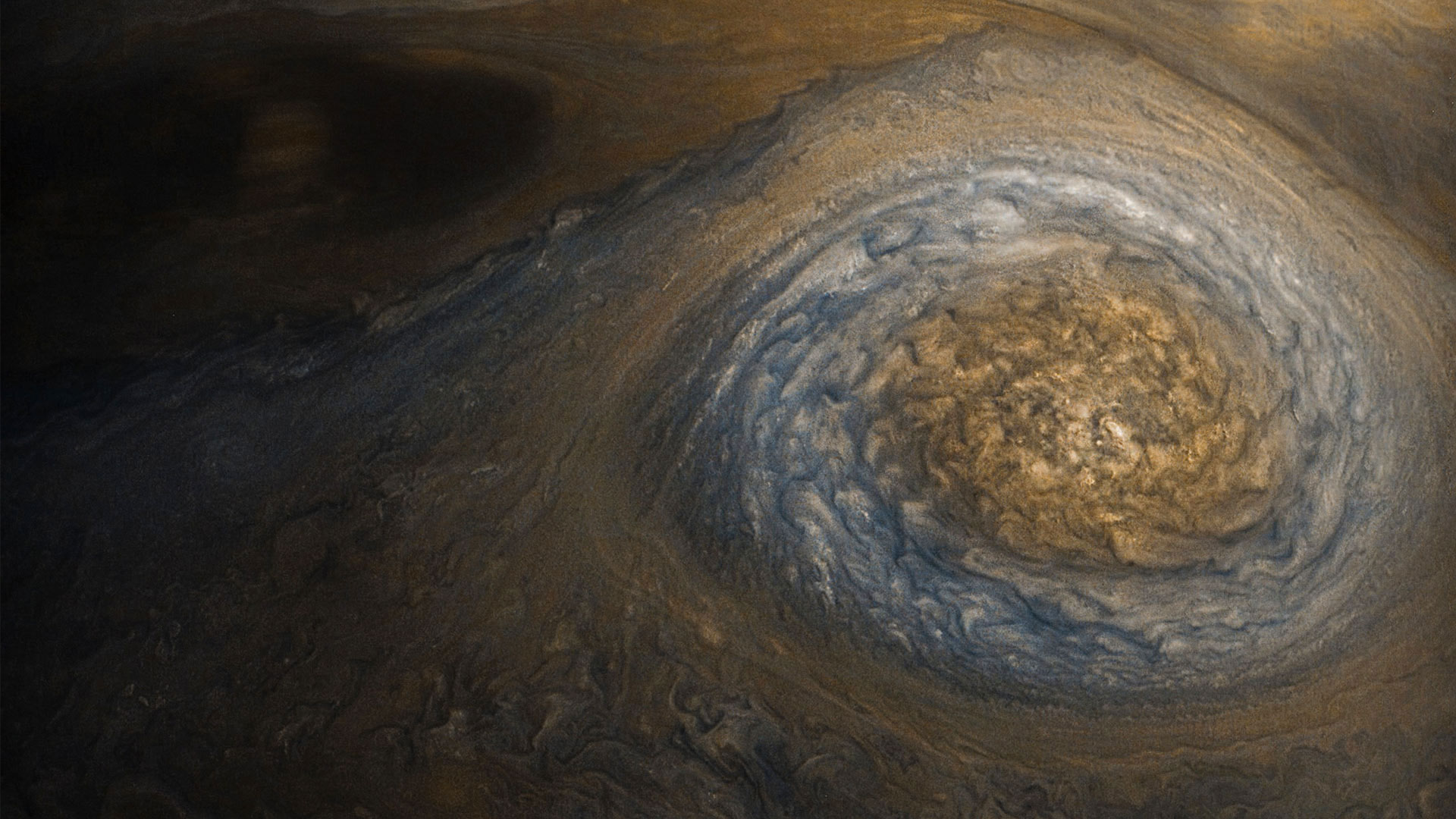木星的冰卫星木卫二 Jupiter's icy moon Europa (© NASA/JPL-Caltech/SETI Institute)
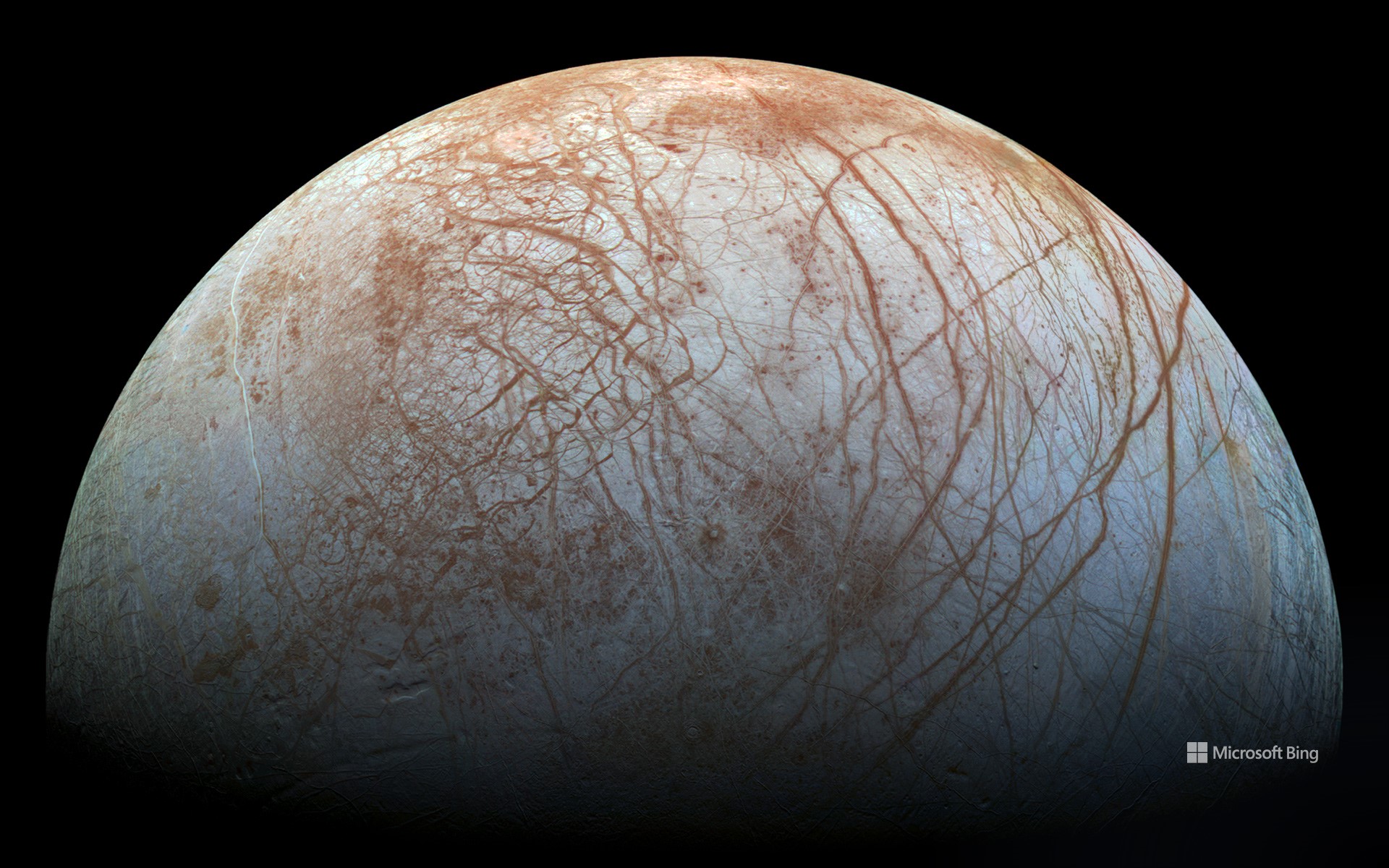
木星的冰卫星木卫二 Jupiter's icy moon Europa (© NASA/JPL-Caltech/SETI Institute)
一轮蓝月亮 A blue moon
世界空间周开幕
今天,我们要去探索宇宙。世界空间周的设立,是为了庆祝空间科学技术为改善人类生活水平所作出的贡献。除了帮助我们了解我们所生活的宇宙,太空探索在帮助科学家开发新药物、创造新能源、改进农业技术方面也发挥了重要作用。今年的世界空间周的主题是空间与气候变化,为了庆祝空间技术在了解和监测地球气候变化方面发挥的重要作用,将有83个国家会举办相关的庆祝活动。
太空探索还带来了太阳系的神奇照片,今天的这张就是其中之一。木卫二是木星已知的95颗卫星之一。它的表面主要由冻结的水构成,这些水破裂后又重新冻结,形成了我们在其表面看到的图案。事实上,虽然木卫二的大小只有地球的四分之一,但它的含水量可能是地球海洋的两倍。世界空间周是花点时间欣赏太阳系内外奇观的最佳时机!
World Space Week begins
Today, we're blasting off to explore the cosmos. World Space Week celebrates the science and technology that go into exploring our universe, and how it benefits us back on Earth. Space exploration has helped scientists develop new medicines, create new power sources, and even improve farming techniques. This year's theme is Space and Climate Change; events will be held in 83 countries to champion the role of space technology in understanding and monitoring Earth's climate.
Space exploration has also led to amazing photographs of our solar system, like the one featured here today. Europa is one of Jupiter's 95 known moons. Its surface is mainly made up of frozen water, which has broken up and refrozen, creating the patterns seen on its surface. Although Europa is just a quarter of the size of Earth, it may contain twice the amount of water. Space Week is the perfect time to take a moment to appreciate the wonders of our solar system, and beyond!
木星及木卫一的蒙太奇图像 Montage of images of Jupiter and its volcanic moon Io (© NASA/Johns Hopkins University Applied Physics Laboratory/Southwest Research Institute/Goddard Space Flight Center)
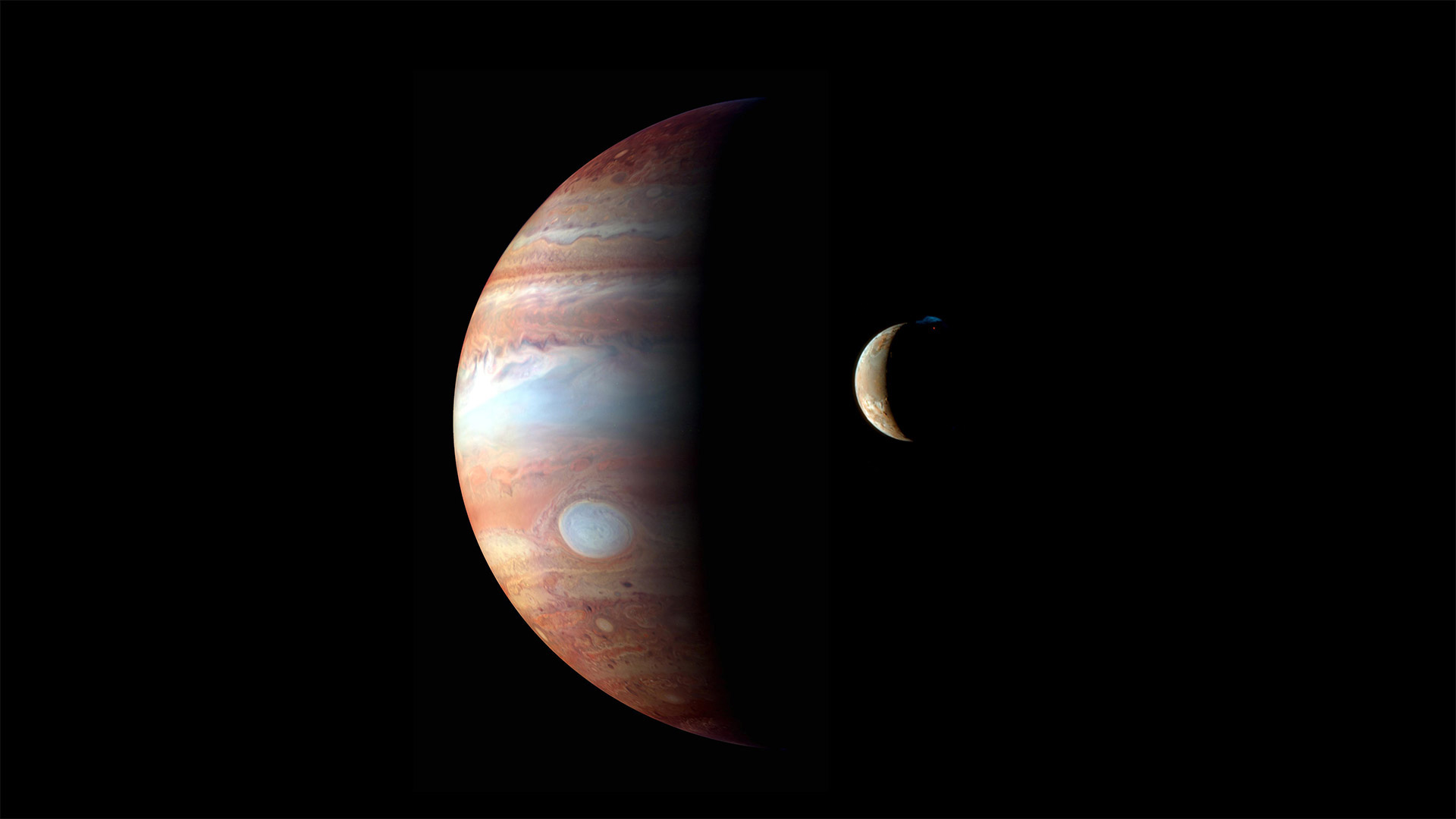
木星及木卫一的蒙太奇图像 Montage of images of Jupiter and its volcanic moon Io (© NASA/Johns Hopkins University Applied Physics Laboratory/Southwest Research Institute/Goddard Space Flight Center)
Infrared Jupiter, erupting Io
To celebrate World Space Week, we're featuring this montage of images of Jupiter courtesy of the New Horizons probe's flyby of the planet in 2007. If Jupiter looks a little different than you're used to seeing, it's because it was imaged using the space probe's near-infrared imaging spectrometer. In this false-color image, Jupiter's high-altitude clouds, like its stormy Great Red Spot, are rendered white, while deeper cloud formations take on reddish hues. The planet's innermost moon, Io, is captured in a true-color composite image during one of its frequent volcanic eruptions. A close look will show lava is glowing red beneath the blue and white plume of particles being ejected into the moon's thin atmosphere.
Space Week is a UN-recognized event that runs each year from October 4, which is the anniversary of the launch of Sputnik in 1957, to October 10, the anniversary of the signing of the Outer Space Treaty in 1967. This year's theme is 'Satellites Improve Life.'
木星的卫星——木卫一、木卫二、木卫三和木卫四 Moons of Jupiter—Io, Europa, Ganymede, and Callisto (© Branko Šimunek/Alamy)
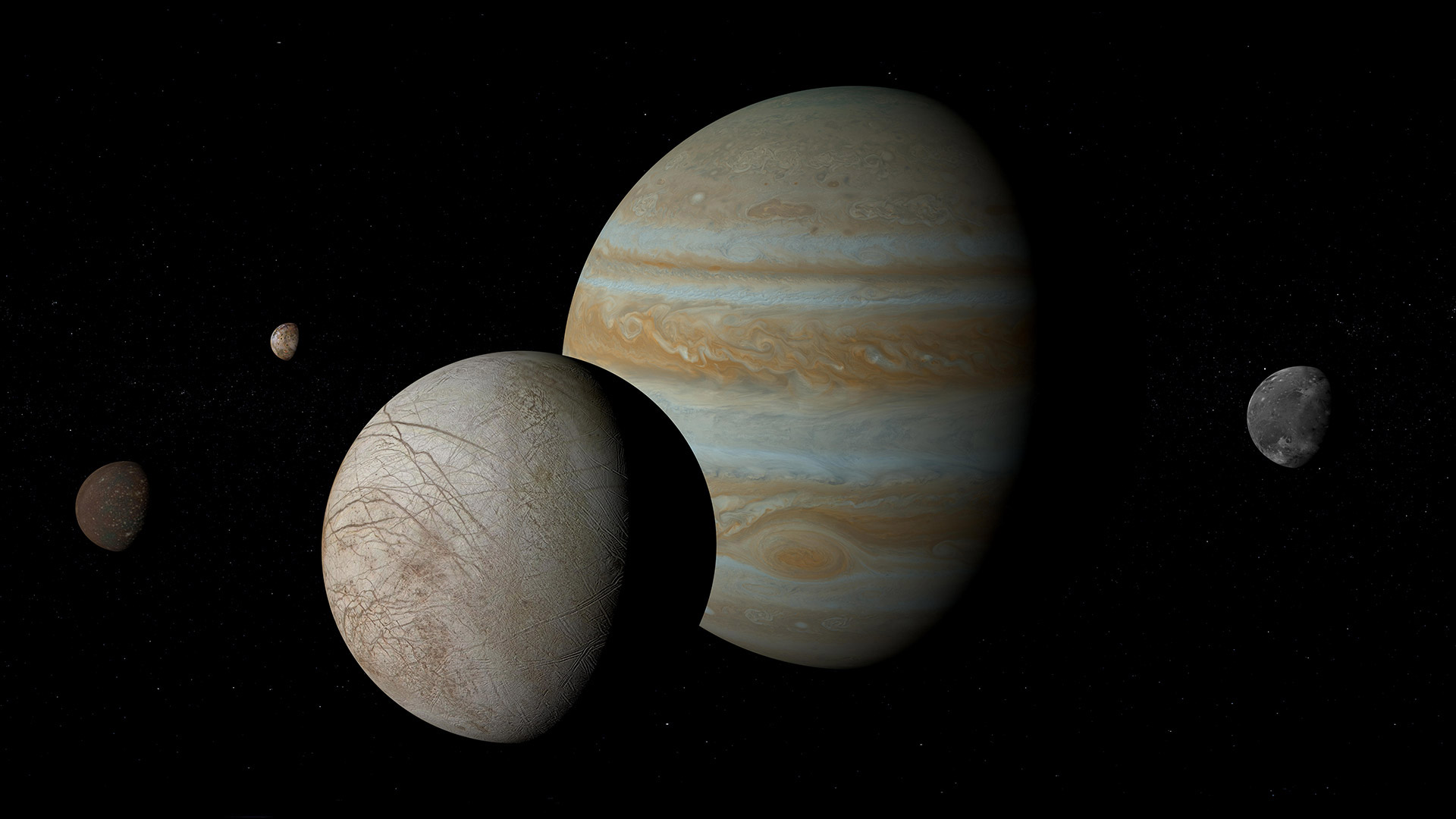
木星的卫星——木卫一、木卫二、木卫三和木卫四 Moons of Jupiter—Io, Europa, Ganymede, and Callisto (© Branko Šimunek/Alamy)
Jupiter and the Galilean Moons
On January 7, 1610, Galileo was the first person to train a telescope on Jupiter—and what he saw surprised him. Strung in a line beside the planet were three tiny stars, one to the left of the planet and two to the right. But when he observed the formation the next night, he saw that now all three were on the same side of Jupiter. Over the following week, he watched as the tiny stars (now joined by a fourth) changed their position relative to the planet while remaining beside it. By January 15, he had it figured out: he was observing four moons orbiting Jupiter.
It was a discovery that would have profound implications on our conception of the cosmos, providing crucial evidence that Earth was not the center of the universe around which everything rotated. Savvy as well as brilliant, Galileo named the four moons 'the Medicean Stars' after his patron, Cosimo Medici. But over the years, as the influence of the Medici family waned and the influence of the genius from Pisa waxed, they became known as the Galilean Moons: Io, Europa, Ganymede, and Calisto.
木星增强色彩后的一组镜头 Sequence of enhanced-color images of Jupiter (© Enhanced Image by Gerald Eichstädt and Sean Doran, CC BY-NC-SA, based on images provided Courtesy of NASA/JPL-Caltech/SwRI/MSSS)
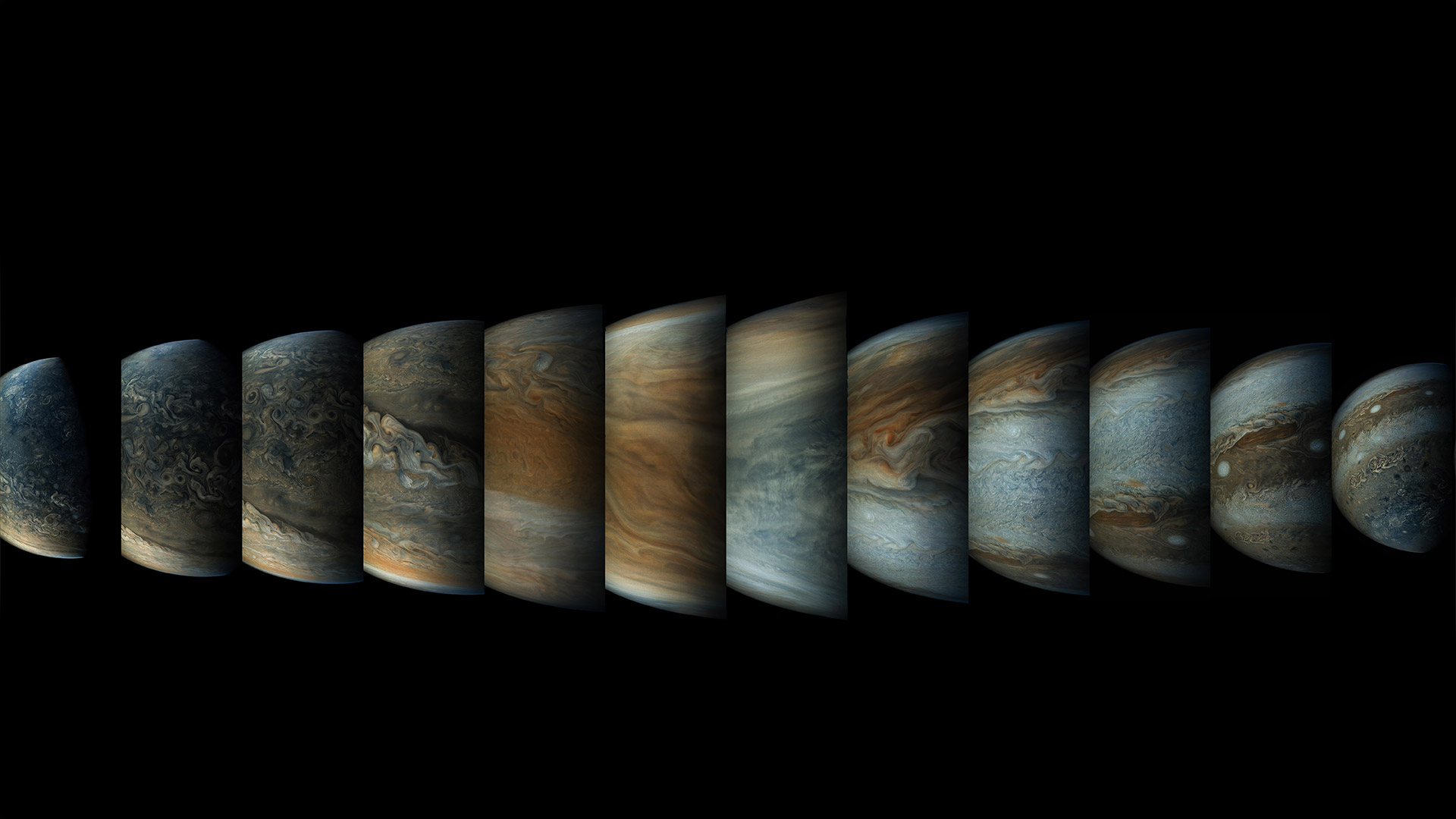
木星增强色彩后的一组镜头 Sequence of enhanced-color images of Jupiter (© Enhanced Image by Gerald Eichstädt and Sean Doran, CC BY-NC-SA, based on images provided Courtesy of NASA/JPL-Caltech/SwRI/MSSS)
Images from NASA's Juno spacecraft as it swoops by Jupiter
For the start of World Space Week, today's homepage features a composite of images taken by NASA's Juno probe as it swooped past Jupiter. Jupiter, the largest planet in our solar system, also has the largest number of moons: 79. Jupiter is the Roman counterpart to Zeus, and so the planet's major moons are named after Zeus's, shall we say, extra-marital partners. So, when it came time to name NASA's most ambitious Jupiter probe, they decided to name it after his wife, Juno, so that she could keep an eye on him. Every 53 days in the course of its wide and complex orbit, the Juno probe makes its closest approach, snapping shots like these as it speeds past the gas giant in just two hours. World Space Week starts on the anniversary of the launch of the very first space probe, Sputnik, which entered orbit around the Earth on October 4, 1957.
